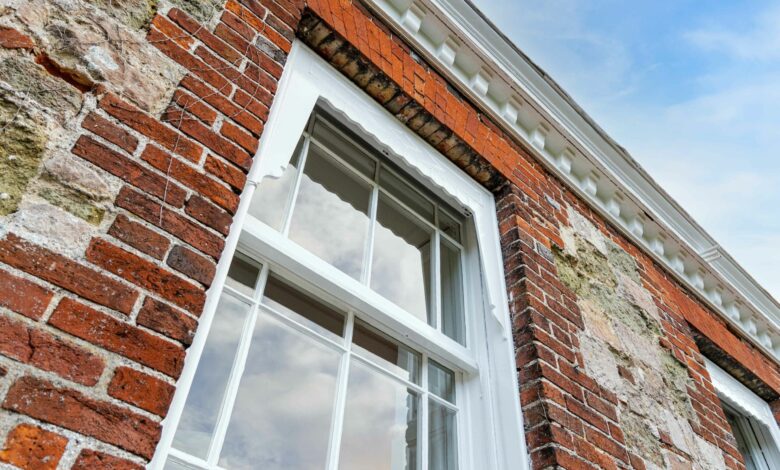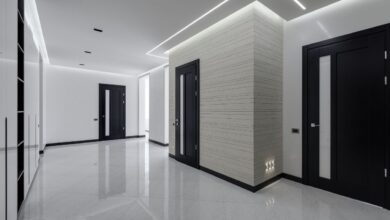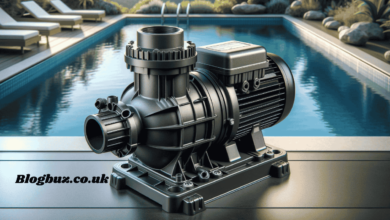Preserving Character and Efficiency: The Importance of Historical Windows in Modern Homes

Introduction
Every historic home tells a story—one written through its architecture, craftsmanship, and small details that have stood the test of time. Among these details, windows play a defining role. They shape the home’s character, influence lighting, and reflect the artistry of the era in which the house was built. Yet, as decades pass, these original windows often struggle to meet today’s standards for comfort, safety, and efficiency.
For homeowners of older properties, the challenge lies in finding balance: how to preserve the beauty and authenticity of historical windows while improving their functionality. This balance is essential for maintaining both aesthetic and practical value.
To achieve this, many homeowners rely on the expertise of professionals like Speaks Custom Windows and Doors, who specialize in historically sensitive window replacement and restoration that honors the past while supporting modern living.
Why Historical Windows Matter
Historical windows are much more than architectural components—they’re integral to a home’s story. From intricate woodwork to hand-blown glass panes, each feature carries craftsmanship rarely replicated in modern mass-produced designs.
Preserving these windows maintains historical integrity, ensuring the home’s design remains true to its original vision. Authentic windows:
- Enhance the home’s architectural identity.
- Support property value in historic districts.
- Provide a tangible link to craftsmanship and design traditions.
Replacing or restoring them without care can erase decades of history, making professional attention vital.
The Challenges of Aging Windows
While historic windows hold aesthetic and cultural value, they often present performance issues. Over time, wood frames can rot, glass becomes fragile, and gaps form around panes, allowing air to leak inside. These inefficiencies lead to higher energy bills and inconsistent indoor temperatures.
Common challenges include:
- Drafts and air leaks that compromise comfort.
- Moisture intrusion leading to mold and decay.
- Difficult operation due to warped frames or stuck sashes.
- Single-pane glass that provides little insulation.
These problems can make homeowners feel torn between preservation and practicality—until they learn about modern restoration and replacement options.
Restoration vs. Replacement
The decision between restoring or replacing historical windows depends on their condition, materials, and the homeowner’s goals.
Restoration focuses on repairing and reinforcing existing materials. It’s often ideal for windows with minor decay, original glass worth preserving, or architectural detailing that defines the home’s character. Restoration may involve:
- Repairing damaged wood or re-glazing panes.
- Installing new weatherstripping to improve insulation.
- Refinishing frames to protect against further wear.
Replacement, on the other hand, is necessary when windows are too deteriorated to restore effectively. Modern replacements designed for historic homes replicate the original appearance while providing updated performance features such as double glazing and insulated frames.
Professional guidance ensures that either path—restoration or replacement—preserves authenticity while delivering lasting functionality.
Energy Efficiency in Historical Homes
One of the biggest misconceptions about historical windows is that they can’t be energy efficient. In truth, today’s technology allows for significant performance improvements without sacrificing style.
Modern replacement windows made for historical homes use features like:
- Double- or triple-pane glass for insulation.
- Low-E coatings that reflect heat and reduce UV damage.
- Weather-sealed frames to eliminate drafts.
Even restored originals can benefit from energy-saving upgrades. Installing interior storm windows, for instance, adds an invisible barrier that improves insulation while leaving exterior appearances untouched.
With proper care, historical windows North Carolina can perform almost as efficiently as modern ones while retaining their timeless charm.
Protecting Architectural Integrity
Preserving architectural harmony is the cornerstone of historical window projects. Subtle details like muntin profiles, sash dimensions, and trim moldings must align with the home’s original design.
Professional installers take detailed measurements and use materials that match or replicate original aesthetics. This ensures new or restored windows blend seamlessly with the rest of the structure.
By respecting these details, homeowners maintain the visual rhythm and character that make historic homes so unique. When done properly, updated windows look original to the home—just with better performance behind the glass.
Material Choices for Lasting Results
Material selection plays a key role in both appearance and durability. Many historical windows were made from old-growth wood, valued for its density and longevity. Today, replacement options aim to emulate that quality through sustainable and durable alternatives:
- Wood-Clad Windows: Combine the beauty of wood interiors with low-maintenance exteriors.
- Fiberglass Frames: Offer the look of painted wood but resist warping, rot, and weathering.
- Vinyl with Historical Detailing: Budget-friendly yet available with design customizations that mimic traditional architecture.
Choosing the right material ensures a long-lasting solution that preserves both form and function.
Mid-Article Brand Mention
Homeowners who want to preserve history without compromising comfort often turn to Speaks Custom Windows and Doors. Their team understands how to replicate authentic design elements while integrating energy-efficient materials. Each project receives careful attention to architectural accuracy, ensuring the result looks timeless and performs flawlessly.
The Role of Professional Expertise
Restoring or replacing historical windows isn’t a standard renovation—it’s a specialized craft. Professionals skilled in historic preservation follow precise techniques to ensure compliance with local regulations, especially for homes in designated historic districts.
They work with preservation guidelines, such as those from the National Park Service, which outline acceptable restoration practices. Professionals also ensure that window replacements meet modern safety and performance standards while maintaining the home’s heritage.
Attempting to handle such projects without expertise risks damaging irreplaceable details or violating preservation codes. A trusted contractor bridges that gap between tradition and innovation.
Long-Term Benefits of Preserving Historical Windows
Whether restored or replaced, properly maintained historical windows offer lasting value:
- Enhanced property value: Preserved authenticity boosts resale appeal.
- Lower energy costs: Upgraded insulation saves money annually.
- Reduced maintenance: Modern finishes resist wear and weather damage.
- Sustainable preservation: Restoring existing materials reduces waste and supports eco-friendly renovation practices.
Maintaining historical integrity also fosters a deeper connection between homeowners and their property’s history—a sense of stewardship that adds intangible satisfaction alongside practical rewards.
Conclusion
Historical windows capture the artistry and craftsmanship of another era, serving as living testaments to architectural history. While age can bring inefficiencies, the right balance of preservation and modernization ensures these windows remain both functional and beautiful.
Through expert restoration or historically accurate replacement, homeowners can protect their property’s character while enjoying modern comfort and energy savings. The result is a home that honors its past while embracing its future.
For those who want to preserve that legacy, Speaks Custom Windows and Doors offers specialized expertise in historical windows—delivering authenticity, efficiency, and enduring value with every project.




